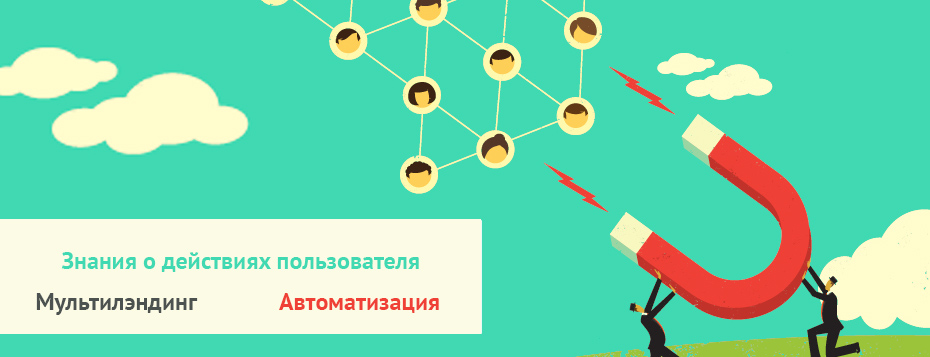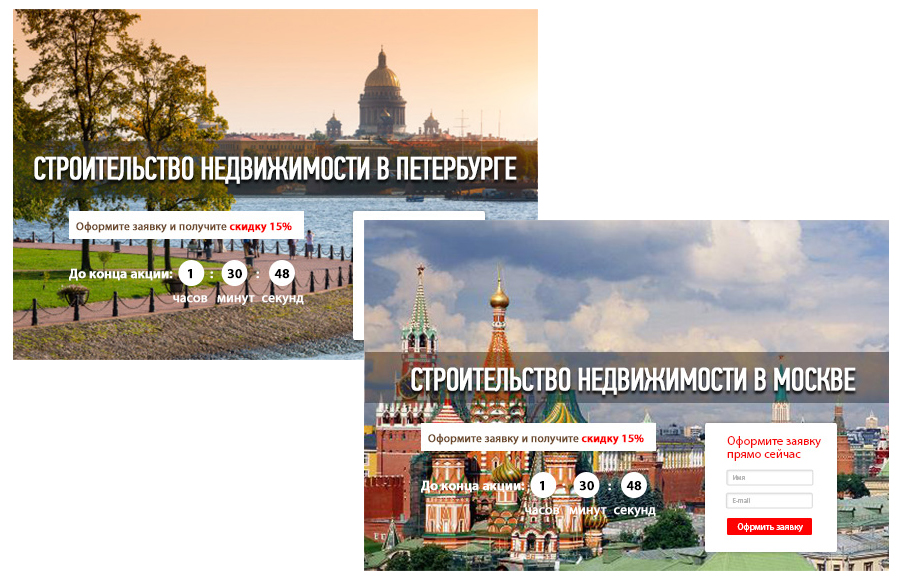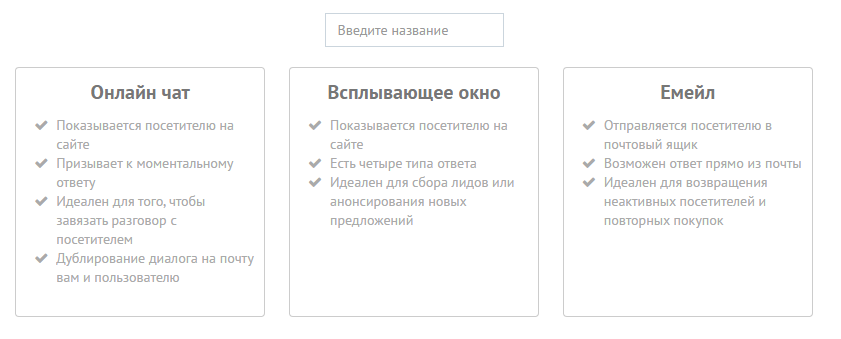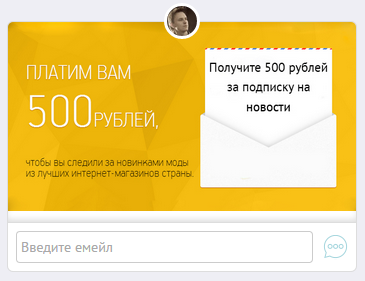2 ways to stop losing 90% of your customers

Companies, building their work on the Internet, fixate on landing pages and thus, make a mistake. On average, conversion to a purchase in Russia shows sad results of 0.2-0.5%. Most landings simply do not convert a huge part of users into clients, but this is more likely the problem is not the Landygs themselves. After all, even the most effective landing pages convert at best 30-40% of the audience, some of the audience still “runs”. What to do?
You know perfectly well that all your users are different, they are all at different stages of thinking about a purchase, their interests and motives are different. Accordingly, one general information (which you have on a landing page) cannot involve all users and bring them to the purchase; you need additional tools and a personal approach to each user segment. There are several solutions to this problem, and they do not exclude each other.
Method 1 . Multilending
You can make content adaptation on the landing page for different segments.
')
You can automatically adjust the headers, images and text on the page for each segment. This means that for different users on the same page will be displayed different personal content. Segments are allocated by:
- traffic source
- requests in contextual advertising,
- utm tags,
- location
- repeated visits, etc.

For example, you bring users from 2 different channels:
- An article about your project in the “Tribune” section will call Zuckerberg;
- By several high-frequency queries in contextual advertising.
It is likely that readers will learn more about you from an article on the Tribune than from a couple of sentences in contextual advertising. Accordingly, when going to the site, the content on the landing page for users from these channels should be different.
MultiLanding is not the most convenient tool because it takes a lot of time to test different variations of content: titles, pictures, etc. As you select several segments and start working with them individually. For example, if you have identified 7 segments and are doing for each of them different content on the site, then imagine how the volume of your work will increase. Create content, make changes, collect data, draw conclusions, make changes, etc. Even for one landing, it is not always possible to do this quickly.
Method 2
Segment visitors by action and send them trigger messages.
If there is not enough information on the landing page to involve the user (and most often it is, because the audience needs to be brought to the purchase step by step), then additional tools should be used.
When you know what your user wants, what pages he visited, what buttons he clicked on the site, how many times he came, what readiness he had to buy, etc., then you will understand where you can get involved and convince to make a purchase.
Imagine a typical city restaurant, what kind of restaurant waiter would be more effective? Who always offers the same dish to everyone (right from the doorway) or the one that remembers the preferences of customers (for example, who among them is a vegetarian, who loves dry red wine in '87, etc.), knows their peculiarities and actively uses these knowledge? The answer is obvious, right?
Therefore, event analytics is becoming popular in Internet marketing. Event analytics allows you to track the various actions and data of each user. You will know, not just a series of actions that users have committed, but also who exactly these actions did. Analytics offered by Google Analytics and Yandex Metric does not provide similar data for customers. We at the Carrot Quest service collect such data and actively use them, but more on that later.
What data is worth collecting:
- What channel he came from (shows his level of awareness about your product, which segment of the target audience he belongs to);
- At what request of contextual advertising he came (or any other advertising where you can use utm-tags);
- What actions you performed on the site (added the item to the basket, filled out the form on the site, left the email, scrolled the page to the end, etc.)
- What pages did he look at (for example, product pages, articles on a blog, product reviews, etc.);
- The number of points (scoring users by points based on the actions that he did on the site).
Let's look at what knowledge of the user it will give, and below discuss the appropriate cases:
- The level of his awareness of you (knowing this, you will understand what he still needs to be told about in order for your product to become valuable to him);
- What kind of product interests him (knowing this, you will understand which product to emphasize in order to involve it);
- His willingness to purchase (by action points are awarded to the user, which can reveal which group of leads the user belongs to - cold, warm or hot);
- The knowledge that the user started, but did not complete the order (dropped the basket, payment, did not finish registration, etc.);
- At what stage the user has disappeared or “got stuck” (knowing this, you will understand how you can involve him and move him to the next step);
- What information is interesting to him (if the user is not reading the 1st article about traveling in Italy, then it is likely that he wants to go there, help him);
- You can get a number of other information, it all depends on your field of activity and creativity.
Knowing this information, you will be able to divide users into segments and build personal communications with them (both manually and automatically). In Carrot Quest analytics is integrated with online chat, pop-up windows and email newsletters. Each of the tools has its advantages and features. Further we will sort on examples.

Examples of using:
1. If the user was browsing a specific product, but did not even add it to the basket .
Imagine you have a jewelry online store. Some users go and look at the earrings and rings, but do not buy them. You can automatically send this segment a letter with the text that it is these earrings and a ring that it can purchase at a discount for a limited time (it is better to send a similar message not immediately, but after a few days reminding the customer about the goods).

This is better than if a customer went to your competitors. Or, if they have not left their email, when they visit the product page again, you can show them a pop-up window.
2. Added product to cart, but did not leave email
An interesting situation when a user was browsing a number of goods (services) on the site, maybe even added them to the basket, but did not log in. Few services can track a user in this case. In this regard, Carrot Quest gives freedom to maneuver. The system always remembers the visitor and his actions (entered email, pressed a button, opened a page of a category or product, etc.). You do not need to re-authorize a visitor to track his movements.
Therefore, you can safely play scenarios of an abandoned basket without even knowing the user's email. Just replace the letter with a pop-up window when you re-visit.
In the window, you can simply remind the user about the abandoned basket, and show exactly what kind of goods he left.

By the way, about how to keep the user, if he did not leave the email, we wrote a great article .
3. If the user is logged off .
Most visitors will leave, but they can be returned (for example, through email marketing). To do this, just collect their contact information. Offer something valuable during the first visit, so you save a significant portion of potential customers.
For example, offer them a bonus (free useful content, discount, bonus amount, free delivery, etc.).

Regarding email marketing, we often write on our blog . Anyway, we write a variety of cases there every week. Subscribe.
If you liked the article, be sure to share it with your colleagues and friends. Write your opinions and decisions.
With pleasure, the Carrot Quest team.
Source: https://habr.com/ru/post/293168/
All Articles